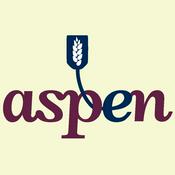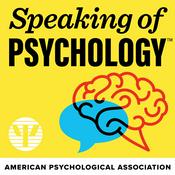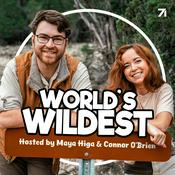137 episodios

3I/ATLAS: Caught in UV | What Europa Clipper Saw When No One Else Could
30/12/2025 | 37 min
We're going live with Dr. Cynthia Phillips, Europa Clipper Project Staff Scientist and Science Communications Lead, from NASA's Jet Propulsion Laboratory, to explore a surprising and exciting new chapter in comet science. Recently, the Ultraviolet Spectrograph (UVS) aboard NASA's Europa Clipper spacecraft made unique observations of the interstellar comet 3I/ATLAS at a time when Earth- and Mars-based telescopes couldn't see it. In this livestream, communications specialist Beth Johnson and Dr. Phillips will unpack what these observations mean for our understanding of interstellar visitors and how instruments designed for one mission can yield discoveries well beyond their original goals. We'll lay out: • How Europa-UVS captured data on 3I/ATLAS's tails and coma while other assets were blocked by the Sun, bridging a critical observational gap. • What signatures of oxygen, hydrogen, and dust the instrument detected, and why that matters. • Why observations from unexpected vantage points — like those aboard Europa Clipper — can deepen our picture of interstellar objects. • What this tells us about the composition, activity, and evolution of a comet that formed around another star. Interstellar comets like 3I/ATLAS are cosmic time capsules from beyond our solar system, carrying clues about alien planetary systems. Capturing data from a spacecraft not originally tasked with comet science is a testament to scientific adaptability and ingenuity — and it gives researchers a rare look inside the workings of an object that has journeyed across the galaxy to visit us. Press release: https://science.nasa.gov/blogs/europa-clipper/2025/12/18/nasas-europa-clipper-observes-comet-3i-atlas/ (Recorded live 19 December 2025.)

Earth 2.0? Maybe Not. Intelligent Life Might Be Far Rarer Than We Think
23/12/2025 | 42 min
Get ready for a fascinating deep dive into one of the biggest questions in astrobiology: How common are biological extraterrestrial intelligences in the Milky Way? Host Simon Steel, Deputy Director of the Carl Sagan Center for Research, is joined by Manuel Scherf and Helmut Lammer (Space Research Institute, Austrian Academy of Sciences) to explore new research that challenges long-held assumptions about "Earth-like" planets and what it really takes for a world to support complex life. Recent work from Scherf, Lammer, and colleagues revisits the idea of Eta-Earth — the number of truly Earth-like habitats in the Galaxy. Their models extend far beyond the basic "habitable zone" and incorporate a suite of filters, including stable atmospheres, oxygen-rich conditions, plate tectonics, subaerial land, and long-term planetary evolution. These filters significantly reduce the number of planets that could potentially host complex or technological life. The study finds that even under generous assumptions, the Milky Way may host at most 60,000 to 250,000 Earth-like habitats — and the number that actually evolve intelligent life could be far smaller. The result? A serious rethink of how rare (or precious) intelligent life might be. Join us as we explore what this means for SETI strategies, exoplanet surveys, and our own cosmic significance. It's a conversation that blends astrophysics, planetary science, and a bit of existential wonder — perfect for anyone curious about where life fits into the grand structure of the cosmos. Paper: https://www.liebertpub.com/doi/10.1089/ast.2023.0076 Conference Abstract: https://meetingorganizer.copernicus.org/EPSC-DPS2025/EPSC-DPS2025-1512.html (Recorded live 8 December 2025.)

SkyMapper: Map All the Sky, All the Time
19/12/2025 | 44 min
In a special bonus SETI Live, communication specialist Beth Johnson welcomes astronomer and entrepreneur Franck Marchis to introduce SkyMapper, a new global network of smart telescopes and all-sky sensors designed to open the universe to everyone. SkyMapper brings together professional observatories, citizen astronomers, and classrooms into a single, decentralized platform. It enables real scientific discovery — from tracking satellites and meteors to monitoring comets and transient events in real time — while giving students and the public the chance to observe the sky, contribute data, and learn how modern astronomy works. We'll talk about the science, the outreach mission, the importance of the SETI Institute's partnership with SkyMapper, and why a worldwide, always-on view of the sky matters more than ever for research, education, and our shared curiosity. Join us live and discover how you can be part of this new way of exploring the universe. 📚 Learn more about SkyMapper: www.skymapper.io 👋 Join the SkyMapper community on Telegram: https://t.me/skymapper_community ✅ Follow SkyMapper on social media: BlueSky: @skymapper.bsky.social X (formerly Twitter): @Skymapperspace LinkedIn: https://www.linkedin.com/company/skymapper-inc/ Reddit: https://www.reddit.com/r/SkyMapper/ (Recorded live 5 December 2025.)

Baby Moons in the Making? The Discovery of a Moon-Forming Disk
16/12/2025 | 29 min
On this episode of SETI Live, host Moiya McTier welcomes two leading researchers—Gabriele Cugno (University of Zürich) & Sierra L. Grant (Carnegie Institution for Science)—to dive into an extraordinary discovery by the James Webb Space Telescope (JWST): a carbon-rich, moon-forming disk around the distant exoplanetary object CT Cha b, some 625 light-years away. What exactly is a "moon-forming disk"? Why is this discovery a game-changer for our understanding of how moons — and ultimately habitable environments around them — can form? Gabriele and Sierra walk us through spectroscopy, chemistry (including acetylene, benzene, and more), observational challenges, and the big philosophical questions: Could moons be even more common than planets? What does this tell us about our own Solar System's past — and the possibilities for life elsewhere? 📚 For more: NASA Press Release: https://science.nasa.gov/science-research/nasas-webb-telescope-studies-moon-forming-disk-around-massive-planet/ Research Paper: https://iopscience.iop.org/article/10.3847/2041-8213/ae0290 (Recorded live 4 December 2025.)

The Moon that Could Support Life: What Cassini Discovered Beneath the Ice of Enceladus
12/12/2025 | 39 min
Join host Beth Johnson for a fascinating episode of SETI Live, featuring planetary scientists Dr Georgina Miles and Dr Carly Howett from the University of Oxford. We'll be unpacking their groundbreaking study showing that Enceladus — one of Saturn's icy moons — may harbor a stable subsurface ocean capable of supporting life. 📄 For more info: The study "Endogenic heat at Enceladus' north pole" has just been published in Science Advances: https://www.science.org/doi/10.1126/sciadv.adx4338 Official press release from the University of Oxford: https://www.ox.ac.uk/news/2025-11-10-saturn-s-icy-moon-may-host-stable-ocean-fit-life-new-study-finds (Recorded live 20 November 2025.)
Más podcasts de Ciencias
Podcasts a la moda de Ciencias
Acerca de SETI Live
Escucha SETI Live, Masaje Cerebral y muchos más podcasts de todo el mundo con la aplicación de radio.net

Descarga la app gratuita: radio.net
- Añadir radios y podcasts a favoritos
- Transmisión por Wi-Fi y Bluetooth
- Carplay & Android Auto compatible
- Muchas otras funciones de la app
Descarga la app gratuita: radio.net
- Añadir radios y podcasts a favoritos
- Transmisión por Wi-Fi y Bluetooth
- Carplay & Android Auto compatible
- Muchas otras funciones de la app


SETI Live
Descarga la app,
Escucha.



































